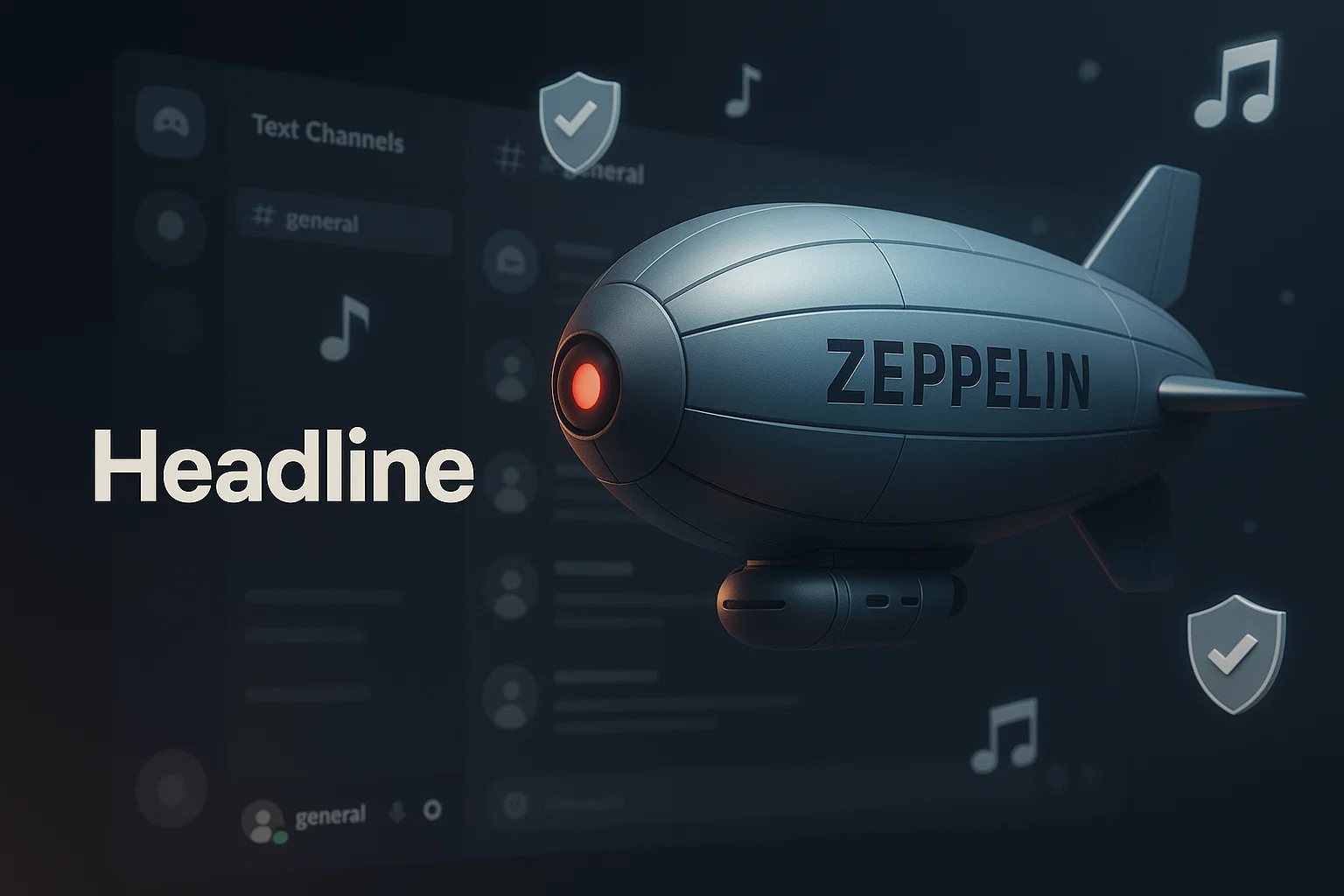Yunite bot is a community-focused Discord assistant you can use to automate moderation, run events, and add utility commands so you can scale engagement and reduce manual work with a quick setup and customizable templates.
Introduction
yunite bot is a practical, community-first Discord bot you can use to automate moderation, schedule events, and add fun utilities to your server. This article is informational and how-to focused: you will learn what Yunite is, why it matters for communities, how to invite or self-host it, and how to configure safe, effective permissions. I’ll walk you through setup steps, include two ready-to-copy code examples, and recommend tooling and resources like the Discord developer docs and GitHub for code. Expect clear, teammate-style guidance you can follow step by step.
You’ll learn both quick fixes and the longer term choices, whether you want a public hosted bot, or a self-hosted clone for privacy and custom features. I’ll also cover compliance, common failures, and how to troubleshoot permission issues.
What is yunite bot and why it matters
Definition and core purpose
yunite bot is a Discord bot implementation used by communities to automate repetitive tasks, manage moderation, run event scheduling, and provide utility and fun commands. It can be a public listing you invite, or a codebase you self-host and modify.
Background and ecosystem
Discord bots typically run on libraries like discord.js or discord.py and authenticate with a bot token. The Discord developer portal explains how permissions and tokens work, and why role order matters when a bot needs to manage roles. Discord+1
Bots like Yunite are popular because they let small teams handle moderation reliably, schedule recurring events, and add engagement features without manual work. When you choose Yunite or a fork, you decide between convenience and control. Public instances are quick to invite, while self-hosting gives you privacy and customization.
Why Yunite matters for your server
- Scales community management, reducing moderator workload and human error.
- Improves engagement, via event reminders, reaction roles, and games.
- Enables brand control, when self-hosted, you control data and features.
Quick note: always review requested permissions before inviting a bot, and follow the principle of least privilege for safety. Vco Tutorials
How to set up yunite bot: step-by-step guide
Follow this practical walkthrough to invite Yunite, configure core features, or run a self-hosted copy.
Invite and basic configuration
- Find the Yunite listing or repo, then use its invite link or generate one in the Discord developer portal. Choose the server where you have Manage Server permissions.
- Grant only the permissions Yunite requires, avoid giving Administrator unless absolutely necessary. Use role position to let the bot manage roles below it. Discord+1
- Run the
helporsetupcommand included with the bot to set prefix, mod-log channel, and defaults.
Configure moderation channels and roles
- Create a
Moderatorsrole and amod-logchannel. - Place the bot role above the roles it needs to manage.
- Restrict critical commands to the
Moderatorsrole, and test with a test account.
Enable event scheduling and notifications
- Use the built-in event module if available, or integrate with calendar services via webhooks.
- Configure reminders, timezones, and test one event before going live.
Self-hosting Yunite (Node.js example)
If you prefer full control, clone a Yunite repo and run it on a VPS or container. Here is a minimal Node.js example using discord.js, labeled and ready to run.
// Node.js, discord.js minimal bot example
// npm install discord.js dotenv
// Save as bot.js, set BOT_TOKEN in .env, run with `node bot.js`
const { Client, GatewayIntentBits } = require('discord.js');
require('dotenv').config();
const client = new Client({
intents: [GatewayIntentBits.Guilds, GatewayIntentBits.GuildMessages, GatewayIntentBits.MessageContent]
});
client.once('ready', () => {
console.log('Yunite clone running as', client.user?.tag);
});
client.on('messageCreate', async (message) => {
if (message.author.bot) return; // ignore bots
if (message.content === '!ping') {
try {
await message.reply('Pong!');
} catch (err) {
console.error('Failed to send reply', err);
}
}
});
client.login(process.env.BOT_TOKEN);
Explanation: This Node.js snippet shows minimal setup, a ping command, and simple error handling for sends. Use environment variables for safety.
Self-hosting (Python example)
# Python, discord.py basic bot example
# pip install discord.py python-dotenv
# Save as bot.py, set BOT_TOKEN in .env, run with `python bot.py`
import os
import discord
from discord.ext import commands
from dotenv import load_dotenv
load_dotenv()
bot = commands.Bot(command_prefix='!')
@bot.event
async def on_ready():
print(f'Yunite clone ready as {bot.user}')
@bot.command()
async def ping(ctx):
try:
await ctx.send('Pong!')
except Exception as e:
print('Send failed', e)
bot.run(os.getenv('BOT_TOKEN'))
Explanation: A short discord.py example, with comments and basic exception logging. Good starting point for adding Yunite-like modules.
Best practices, recommended tools, pros and cons
Moderation and security best practices
- Use role hierarchy and avoid Administrator, apply principle of least privilege. Vco Tutorials
- Log actions to a private channel, and enable two-factor authentication for moderator accounts if possible. Discord
- Keep backups of configuration files and tokens, rotate tokens on suspected leaks.
Recommended tools and resources
- Discord developer documentation, for permissions, intents, and API rules.
- Pros: official, comprehensive, required reading. Cons: dense UI for beginners. Start tip: create an application and copy the bot token securely. Discord
- GitHub, to find Yunite forks, manage your own code, and set up CI.
- Pros: full control, visibility. Cons: maintenance responsibility. Start tip: fork a repo and set up automated deployments.
- top.gg listings and community hubs, for discovery and invites.
- Pros: traffic and reviews. Cons: public exposure, review moderation. Start tip: claim your listing and keep a support server.
Pros and cons summary
- Pros: automates moderation, scales events, boosts engagement.
- Cons: public versions may have downtime, forks vary in quality, self-hosting requires technical upkeep.
Challenges, legal and ethical considerations, troubleshooting
Common challenges and fixes
- Permission errors, caused by role order, fix by moving bot role above the roles it needs to manage.
- Music or external API failures, caused by third-party changes, check logs and update dependencies.
- Rate limits, use caching and backoff logic in code.
Compliance checklist
- Avoid storing message content unless you have consent.
- Provide a privacy notice if you store or process user data.
- Use secure storage for tokens and rotate keys on suspicion.
Alternatives: if privacy or compliance is a concern, prefer self-hosting or use dedicated moderation-only bots rather than public all-in-one instances.
Paraphrase: Google advises that meta descriptions and page content should clearly describe a page’s purpose and help users decide what to click. (Google) Google for Developers
Paraphrase: SEO authorities recommend concise, unique meta descriptions to boost click-through rate, treat them like ad copy. (Moz) Cloudfront
Conclusion & CTA
Yunite bot gives you a fast way to automate moderation, run events, and add community features, whether you invite a public instance or self-host for full control. Start with safe permissions, a mod-log, and a test server. If you want templates, deployment help, or a custom Yunite plugin, Welcome to Alamcer, a tech-focused platform created to share practical knowledge, free resources, and bot templates. Our goal is to make technology simple, accessible, and useful for everyone. Provide free knowledge articles and guides in technology. Offer ready-to-use bot templates for automation and productivity. Deliver insights to help developers, freelancers, and businesses. Custom development services for bots and websites, on request. Reach out to get a free template or a deployment plan.
Bold takeaways:
- Check bot permissions, avoid Administrator.
- Test features on a staging server before going live.
- Self-host for privacy, public listing for ease.
FAQs
yunite bot
Yunite bot is a Discord bot implementation used for moderation, event scheduling, and utilities. It may exist as a public hosted bot or as a community codebase you can self-host and customize to your needs.
What is yunite bot?
Yunite bot is a community-focused bot for Discord that automates moderation, events, and utility commands. You can invite a public instance or run a self-hosted version to control data and features.
How do I invite Yunite to my server?
Find the Yunite invite on a trusted listing, or the bot’s website, then authorize it with the requested scopes. Ensure you have Manage Server permission and review requested permissions before confirming. Discord+1
Can I self-host Yunite?
Yes, clone a Yunite repository from GitHub, set environment variables for tokens, and run it on a VPS or container. Use CI/CD for deployments and secure your tokens.
What permissions does Yunite need for moderation?
Typical permissions include Manage Messages, Kick/Ban Members, Embed Links, Read Message History, and for music Connect and Speak. Only grant what the bot needs. discordjs.guide
Why are my commands failing sometimes?
Common causes include insufficient role position, expired tokens, API rate limits, or dependency mismatches. Check logs, update libraries, and verify bot intents.
How do I secure my bot token?
Store tokens in environment variables, never commit them to source control, and rotate the token if leaked. Use secrets management or CI secrets for production deployments.
Does Yunite comply with privacy laws?
Running bots that process user messages may implicate privacy laws. Provide a privacy notice, minimize data storage, and consult a professional if you process personal data.
Where can I find official developer guidance?
Read the Discord developer documentation for permissions, intents, and API rules, and follow Google and SEO best practices for your bot listing metadata. Discord+1
External resources and further reading
- Discord developer documentation, for permissions and application commands. Discord
- Google Search Central guide on snippets and meta descriptions. Google for Developers
- Moz Beginner's Guide to SEO for meta description best practices. Cloudfront
- SEMrush getting started guide for promoting and analyzing discoverability. Semrush
Compliance and disclaimer
This guide is informational, not legal advice. If your bot stores or processes personal data, follow your privacy policy, ToS, and applicable laws, including GDPR or CCPA. Consult a legal professional for compliance guidance.



